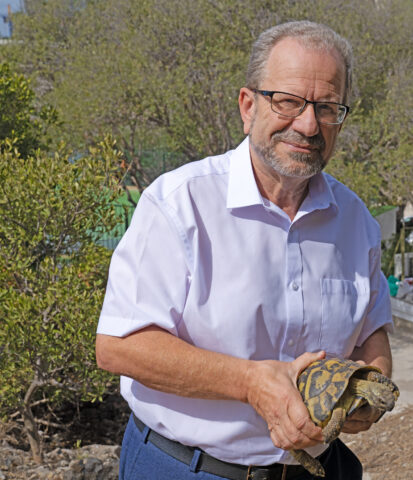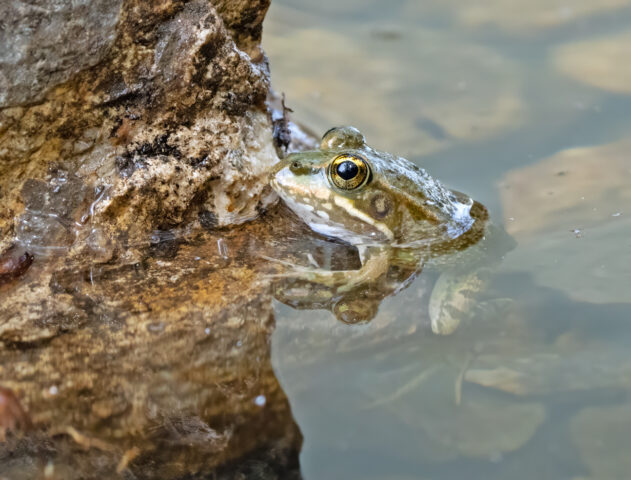Landmark conservation project at Parson’s Lodge
Six Hermann’s tortoises, which became extinct on the Rock, wild rabbits and Iberian water frogs were released at Parson’s Lodge on Monday, which is being marked as a “landmark event in the history of wildlife conservation in Gibraltar”.
The adult tortoises, three males and three females, were released at Parson’s Lodge, part of the Gibraltar National Park, as a rewilding project that attempts to restore this species to Gibraltar.
The potential idea to reintroduce the Hermann’s tortoise was raised at the Calpe Conference back in 2017.
Caretaker Minister for Heritage, Dr John Cortes, who was present at the release, said: “This is a really exciting occasion and part of the journey towards restoring as much of Gibraltar’s original wildlife as is possible.”
“It’s a great initiative and so fitting in Parson’s Lodge, soon to be opened as a Museum of Natural History.”
The Hermann’s tortoise species is in significant decline due to widespread habitat loss across much of its range, particularly in the western regions, the Ministry for Heritage said.
As a result, its conservation status has been listed as Near Threatened by the IUCN Red List of Threatened Species, though it is close to meeting the criteria for Vulnerable status.

“Hermann’s tortoise was a natural species on the Rock, as evidenced by numerous finds of their remains in Pleistocene deposits at Gorham’s and Vanguard Caves and in the recently named Neanderthals’ Grotto,” the Ministry spokesman added.
“It is extinct on the Rock.”
Hermann’s tortoise (Testudo hermanni) is a small to medium-sized species of tortoise belonging to the family Testudinidae and native to the Mediterranean regions of southern Europe.
There are two recognised subspecies: the western Hermann’s tortoise (T. h. hermanni) and the eastern Hermann’s tortoise (T. h. boettgeri).
The western population occurs patchily from northeastern Spain (including the Balearic Islands), through southeastern France, Corsica, Sardinia and Sicily as well as the coastal plains of peninsular Italy.
The eastern population is found in coastal Croatia, Bosnia-Herzegovina and Montenegro, central and southern Serbia, inland to southwestern Romania, much of Bulgaria, North Macedonia, nearly all of Albania, the Greek mainland plus islands from Corfu to Zakynthos, and European Turkey. Additionally, it has been introduced to Cyprus.

Hermann’s tortoises prefer open patchy evergreen Mediterranean oak forest, however, they also inhabit other environments such as maquis, garigue, dune scrub and maritime grassland, as well as agricultural and railway edge habitats.
Females produce one or more clutches of 3-5 eggs per year.
Both sexes reach maturity around nine to 12 years of age.
Hermann’s tortoises emerge from their nocturnal shelters in the undergrowth during the early morning to bask in the sun and warm their bodies.
They then roam about the Mediterranean meadows of their habitat, foraging for wildflowers.
Around noon, as the sun’s heat intensifies, they retreat to their shelters until the late afternoon as temperatures begin to cool again and resume feeding.
They spend the relatively mild Mediterranean winters hibernating in their dug-out shelters. During this four to five-month period, their heartrate and breathing slow down considerably.










